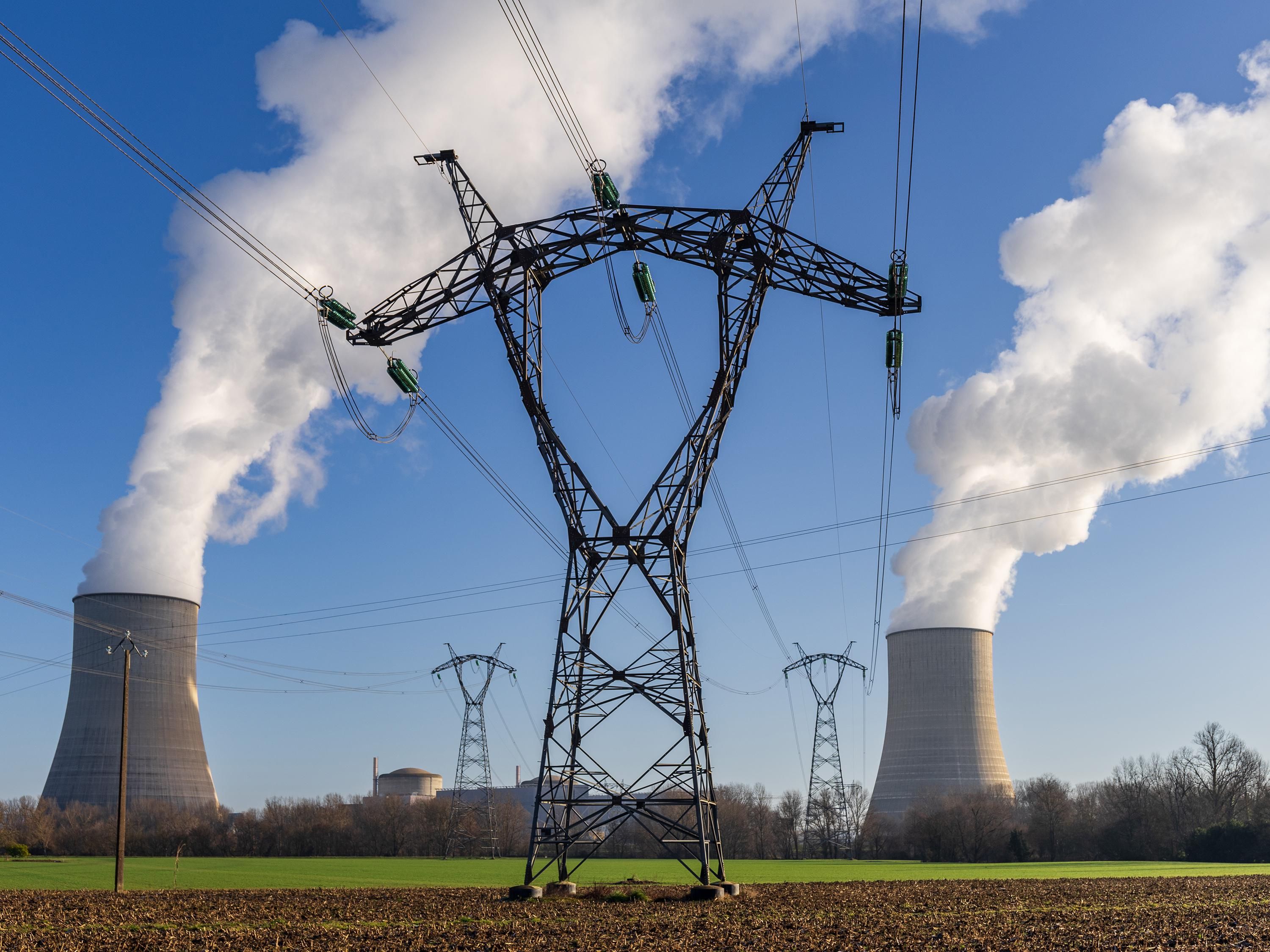Is Europe’s Nuclear Phaseout Starting to Phase Out?
France re-ups aggressive fission policy; Poland and Romania expand theirs; EU frameworks will treat some nukes as sustainable
The Golfech nuclear power plant in the Occitanie region in southern France has been operating, according to the World Nuclear Association, since 1990.
In the depths of the 1970s oil crisis, French prime minister Pierre Messmer saw an opportunity to transform his country’s energy supply. His plan’s legacy is the dozens of cooling towers rising from the French landscape, marking the nuclear power stations that produce over two-thirds of France’s electricity, by far the highest proportion of any country on Earth.
Yet in a world where Chernobyl and Fukushima Daiichi smolder in recent memories, France’s cooling towers might seem like hopeless relics. Philippsburg, an old fortress town in Germany just 40 kilometers from the French border, once hosted a nuclear power plant with two towers just like them. A demolition crew brought both down on an overcast day in early 2020. The event was abrupt and unceremonious, its time kept secret to prevent crowds from gathering amidst the first wave of COVID-19.
Following somewhat in Messmer's footsteps, French president Emmanuel Macron announced a plan earlier this month to build at least six new reactors to help the country decarbonize by 2050.
At first glance, there’s little life to be found in the nuclear sectors of France’s neighbors. Germany’s coalition government is today forging ahead with a publicly popular plan to shutter the country’s remaining nuclear reactors by the end of 2022. The current Belgian government plans to shut down its remaining reactors by 2025. Switzerland is doing the same, albeit with a hazy timetable. Spain plans to start phasing out in 2027. Italy hasn’t hosted nuclear power at all since 1990.
France can claim a qualified victory: Under current EU guidelines, at least some nuclear power will be categorized as “green.”
Some of these antinuclear forces have recently found a sparring ground with France in drafting the EU’s sustainable finance taxonomy, which delineates particular energy sources as “green.” The taxonomy sets incentives for investment in “green” technologies, instead of setting hard policy, but it’s an important benchmark.
“A lot of investors…they’re not experts in this topic, and they’re trying to understand: What’s really sustainable, and what is greenwashing?” says Darragh Conway, a climate policy expert at Climate Focus in Amsterdam. “And I think a lot of them will look to official standards that have been adopted, such as the EU’s taxonomy.”
France, naturally, backed nuclear power’s greenness. Scientists from the EU Joint Research Centre agreed, reporting that nuclear power doesn’t cause undue environmental harm, despite the need to store nuclear waste.
The report was quickly blasted by ministers from five countries, including Germany and Spain, who argued that including nuclear power in the taxonomy “would permanently damage its integrity, credibility and therefore its usefulness.”
But the pronuclear side can claim a qualified victory: As of now, at least, some nuclear power is slated to receive the label.
(So, incidentally, will natural gas, which the current German government actually favored.)
This row over green finance obscures an unfortunate reality: It’s uncertain how the power once generated by fission will be made up if plants go offline. The obvious answer might be solar and wind. After all, the cost of renewables continues to plummet. But to decarbonize Europe’s grid in short order, the renewable requirements are already steep, and removing nuclear energy from the picture makes it even harder to match that curve.
“Even in the most ambitious scenarios but the most ambitious countries, it is an incredible undertaking to try to deploy that much in terms of renewables to meet the climate goals,” says Adam Stein, a nuclear policy expert at the Breakthrough Institute. It's possible for some countries to succeed, he says, but that would likely involve them buying an outsized share of the world’s supply of renewable energy infrastructure, threatening to prevent other countries from reaching their goals.
This reality has come to the forefront as gas prices spiked over Europe’s past winter. France continued to export its nuclear power as supplies of politically sensitive Russian natural gas ran thinner. Unlike the concrete in reactor shielding, public opinion isn’t set, and indications are that rising energy costs are softening attitudes to atoms, at least in Germany.
And other countries are charting new nuclear courses. Poland has begun forging ahead with French-backed plans to build a half dozen nuclear reactors by 2043. In October, Romania adopted a plan to double its nuclear capacity by 2031. Closer to the Atlantic, in December, a new Dutch coalition government stated its ambition to build two new nuclear power plants, declaring them a necessity to meet climate targets that aren’t falling any further away.
It’s entirely possible that the picture might change as solar and wind costs continue to fall and as renewables expand. After all, in sharp contrast to those two, the average price of nuclear electricity had actually nudged upward by 26 percent between 2010 and 2019.
“Whether nuclear is more cost effective than renewables, it does differ per country,” says Conway. “In a lot of countries, nuclear is already more expensive than renewables.”
But Stein says that the idea of looking at nuclear as a bottleneck for renewables is flawed—when the real target should be to reduce reliance on fossil fuels. “We need every clean energy source, building as much as they can, as fast as they can. It’s not one versus the other,” he says.
- Lessons Learned Along Europe's Road to Renewables - IEEE ... ›
- Siemens Says Germany Nuclear Phase Out to Cost Trillions - IEEE ... ›
- NRC Opposes European Moves to Tighten Nuclear Safety Post ... ›
- The State of Ukraine’s Nuclear Plants in the First Weeks of War - IEEE Spectrum ›
- The State of Ukraine’s Nuclear Plants in the First Weeks of War - IEEE Spectrum ›
